After burns
No. 149
When we finally got off the interstate after a long travel day the Tuesday of spring break, I could see fires in the southwest. Big plumes of smoke coming up from the horizon, just as the sun was working its way down into orange. The dystopian novelist in me had no trouble imagining it as an opening scene—sign of some counter-insurgency action here in one of the poorest corners of the Midwest, a place where long-brewed resentment is sometimes advertised in neo-fascist flags by the side of the road, and more often shared in private conversations that somehow embed it in self-deprecating Corn Belt humor. But it wasn’t a sign of conflict. It was a sign that more people have figured out how to use fire to heal the land. Especially in places like Southern Iowa, where the highest land values now go to rewilded refuges for wealthy hunters to enjoy.
We were there to help my recently widowed mom prepare to put the acreage she and my dad retired to on the market, so she can come join us in Texas. They’ve had the place more than three decades now, and this trip I could really put together the bookends of how she figured out how to care for the land in a way that mostly let it take care of itself. Using controlled burns to bring back the biodiverse ecology of a forest of majestic bur oaks interlaced with pockets of prairie.
I remember coming down there with my dad right after they bought the place. A summer work day, trying to clean up the land with saws, cutting down all the little cedars and ironwoods that had grown on an open hilltop used as pasture. Sweaty, exhausting work that had almost no impact. They had bought the land cheap, from a bachelor farmer across the road whose grandparents had homesteaded the place in the 1870s, moving there from Vermont. The land was pretty useless from an agricultural perspective, with only pockets of tillable parcels at the tops and bottoms of a washboard woodland landscape. A remnant of forest in the region between the Mississippi and the Missouri, where by the late twentieth century trees were mostly to be found along the property lines.
I don’t know where my mom learned about the potential of fire to restore native plant ecologies. It was the sort of thing a transplanted German from a long line of Teutonic nature nerds would do: try out the technique she had read the Indians used to create better hunting conditions, in an Anglo-American land management culture dominated by instrumentalist models for the extraction of surplus from the earth. A perspective in which fire was the element of destruction, not regeneration.
The state extension officers told her she was crazy, and would kill what life was left. She did it anyway, every year, and within two decades had stewarded a model restoration. Native plants came back without a single seed ever being introduced, and native fauna followed. Visiting biologists—there were many—would find species considered long disappeared from the region. The life energy was palpable, especially in spring and summer.
When I walked out into her west prairie on Thursday morning, after a thunderstorm blew through the night before, the beauty of the place was sublime. A thick fog came up with the sun, especially thick down in the creek that marks the border between forest and the grassland. Coyotes like that transitional zone, as do the bald eagles, who have returned to this country after being mostly gone from the Midwest when I was a kid. I had heard the coyotes calling in the morning, sounding less crazy than the urban coyotes back home in Austin. I wondered if it might still be mating season up north.
When I got back to the house, it was mating season on the pond. Not for coyotes. A trio of wood ducks, two males and one female. Mom handed me her kitchen table field glasses and explained how they nest in the hickory I had just walked through. Male wood ducks are maybe the most extravagantly plumed bird I’ve ever seen in the wild, with their iridescent burgundy breasts and multicolored crests, and I’d only seen them once before, looking dislocated in the trash-filled waters of Austin’s urban Colorado after a flood.
They were back the next day. This time with four males to the one female, paddling around in a slow-motion competitive water dance, the males each trying to follow the female as she cruised around the pond, one suitor trying to scare off another every few moments, with the bumper car turns and puffed-up plumage that pass for aggression among ducks. After a while, the female disappeared behind the reeds, perhaps evading them all.
I was packing up boxes of books to donate to the local library when the fire started around the house. You could see it to the west, on the far side of the hickory, smoke filling the creek valley that had been cloaked in fog the day before. Then just as I was getting ready to load the boxes in the truck, it started burning right around the guest house where we were. The closest member of the crew was also the youngest—a skinny tween with elfin energy, wearing oversized coveralls and a big yellow hard hat. When I looked through the garage window, I caught a weirdly serene vignette of the kid semi-reclined on the wheaten winter grass, watching the fire spread just feet away, like some pyro variation on Wyeth’s Christina.
When I came back into the guest bedroom, where Agustina was trying to get our daughter down for a nap, we spied my mom sitting on the back stoop, admiring the burn as it spread around the pond and up through the old vineyard, oblivious to the smoke. I wondered, as she must have been, if this would be the last burn she would get to see.
When I came back from finally running the books to town—some headed to our home in Austin, others donated to the local Carnegie Library—a juvenile bald eagle flew right over me on the gravel road from the highway, identifiable from its characteristic splotchings of dark and white feathers. We had seen a juvenile bald eagle in exactly that spot a year and a half before, as we headed to catch our flight back to Austin after Dad’s memorial service. Too long, surely, for this to be the same bird.
I got a picture this time, a crummy phone picture. When I should have just watched it.
In the garage I found the pile of my dad’s old burn gear that I had made the last time I was up there. Country living was not really his thing. But he was the sort of life partner who was game to try whatever my mom wanted, and for the first two decades he made it fun by planting a vineyard and making wine, some of which was quite good. He even made Iowa champagne.
The first years they burned, there were no professionals around who you could hire to do it safely and masterfully like the crew that was there last week. They did it themselves, with the aid of some locals they had gotten to know. My dad famously burned his eyebrows off the first time, and laughed about it. And in time, after he retired, he came to love the natural wonder that burning the land yielded, a retired dentist reading Turgenev by the window and watching the eagles come in.
As an extension of the loss she has endured in the last five years with the death of my brother and then of her partner of 60 years, my mom seems resigned to the likelihood that the land will lose some of its biodiversity if whoever buys her place doesn’t continue to burn. Maybe she’s right—she certainly knows that place intimately. But I have to think the ecological richness she has stewarded will endure on its own. And I think she might be surprised how effective the land is at teaching people how to do their part in maintaining that ecology. Especially once they get a glimpse of how it can make them feel.
Right around the time the first Anglo settlers were building their new homesteads in Southern Iowa, America’s founding landscape architect Frederick Law Olmsted took a saddle trip across Texas with his brother, writing dispatches for readers of a New York newspaper. As they headed up the Colorado River valley toward Austin, they passed through the Blackland prairie, the beauty and vastness of which Olmsted tried to convey through nautical descriptions of the way the air and light moved across the limitless expanses of tall grass like an ocean on a clear day.
In the distance, he notes “the red and black clouds of distant fires.” And as they ride on, they eventually come up over a swell to find themselves on freshly charred ground, from a burn that may have just played out. Then quickly the weather turns, from pleasant to blustery, wet and cold, as a rainstorm blows in from the north, perfectly timed to regenerate the browned land. A reminder of why our mid-continental ecologies respond so well to fire, because they are so adapted to it.
Similar weather had come through Austin while we were out of town, and on the day we returned home the resultant abundant spring was evident in the rich blooms of early wildflowers—primrose, castilleja, more scrambled eggs than I have ever seen, and thick carpets of bluebonnets in the medians, berms, and urban interzones. Down on the rocky bank of the river behind our house, a rewilded gravel dredge, I even spotted a pink bluebonnet—product of a recessive gene that is rarely expressed.
Bluebonnets are a sign of nature’s resilience, but usually not a sign of ecological health. They thrive in disturbed areas, like pastures and roadsides, where more biodiverse plantscapes have been erased. When you restore a prairie ecology here, the bluebonnets become less common. Their abundance in years like this is a sign of a healthy and wet spring, but it is also a reminder of how much has been lost. That the native prairie is mostly gone from Texas, almost entirely eradicated in the urbanized corridors. And even when you recreate it, as we did on our edgeland acre, it is almost impossible to keep out the prodigious invasives.
Ironically, or perhaps tellingly, it’s in the areas we have never actively restored that springtime is most beautiful here, especially this year. In the outlaw landfill of the bluff, down behind the grotto we made from trash that had been dumped here before we showed up, where the spiderwort manages to outcompete the brome grass. I wrote about it in the last installment, but only after I posted it did I get my film shots back from the lab.
I took some with my dad’s old Canon macro lens, which he used to take pictures of people’s teeth in the 70s. The colors and textures were otherworldly. It makes me wonder if the Tradescantia might be mutating here, in the zone where it’s too dangerous to burn. We can’t really bring back the prairie that once was, even if we burned every acre from San Antonio to Dallas. But we can help cultivate something new, an ecologically vibrant interstitial wilderness. Even if all we do is give it a little time and space to do its thing.
In the UK, a new nationwide development law has just been enacted that requires any real estate project that will disturb existing habitat to ensure a net 10% gain in biodiversity on the site. Imagine what such a requirement could do here, in a landscape where pockets of pre-settlement ecology still can be found. It’s an idea worth stealing, and hopeful evidence of how love of the land and the non-human life it harbors can help us transcend our partisan divisions, and envision the more beautiful future we could share.
Further reading
For a book-length anthropological study of Native American land management techniques, my mom turned me on to The Ecological Indian by Shepherd Krech. In the chapter on fire he describes controlled burns so frequent and extensive that Dutch navigators saw them off the New England coast in the 1600s—an entire continent regularly burned to stimulate wildlife, and sometimes to corral it for easier slaughter.
I learned of the UK’s Biodiversity Net Gain legislation Thomas Windward’s new Urban Nature Diary. In the same installment he also reported how Belgium has become the first European country to recognize ecocide as an international-level crime. Only in areas of activity under the jurisdiction of the Belgian federal government, but there’s a movement to promote similar legal theories under the Treaty of Rome.
In Des Moines over spring break, we got to check out the amazing Mary Miss land art installation in a wetland site near my childhood home, Greenwood Pond: Double Site, 1989-1996, which may soon be decommissioned due to funding constraints. Even with some sections of the intervention already fenced off, it was an inspiring framing of a natural site.
My spring break read was W.E.B. Du Bois’ biography of John Brown, which I picked up on a recent trip to Austin’s amazing new Alienated Majesty Books. It’s a fascinating read, written when memories of Brown’s actions were fresher. And while it’s political and social history focused on one life, it provides a rich sense of how much our long fights in this country over slavery and abolition were (and still are) tied up with our exercise of dominion over the land.
Thanks to everyone for the generous enthusiastic response to my sharing of the cover of my forthcoming book, A Natural History of Empty Lots, described by the publisher as “a genre-bending blend of naturalism, memoir, and social manifesto for rewilding the city, the self, and society.” Preorders can have a big impact on a book’s success, and the goodwill of readers of this newsletter helped the book briefly break into the number one spot in books about urbanism and the top 100 in nature books, if the bots can be believed.
For those who missed it, I’m planning to make and mail a print version of this newsletter to folks who preorder the book and let me know by reply to this email, or by emailing me at chris@alexbrownfoundation.org. Be sure to include your snail mail address. And please be encouraged to spread the word if you know anyone who might find this of interest.
Thanks and have a great week.




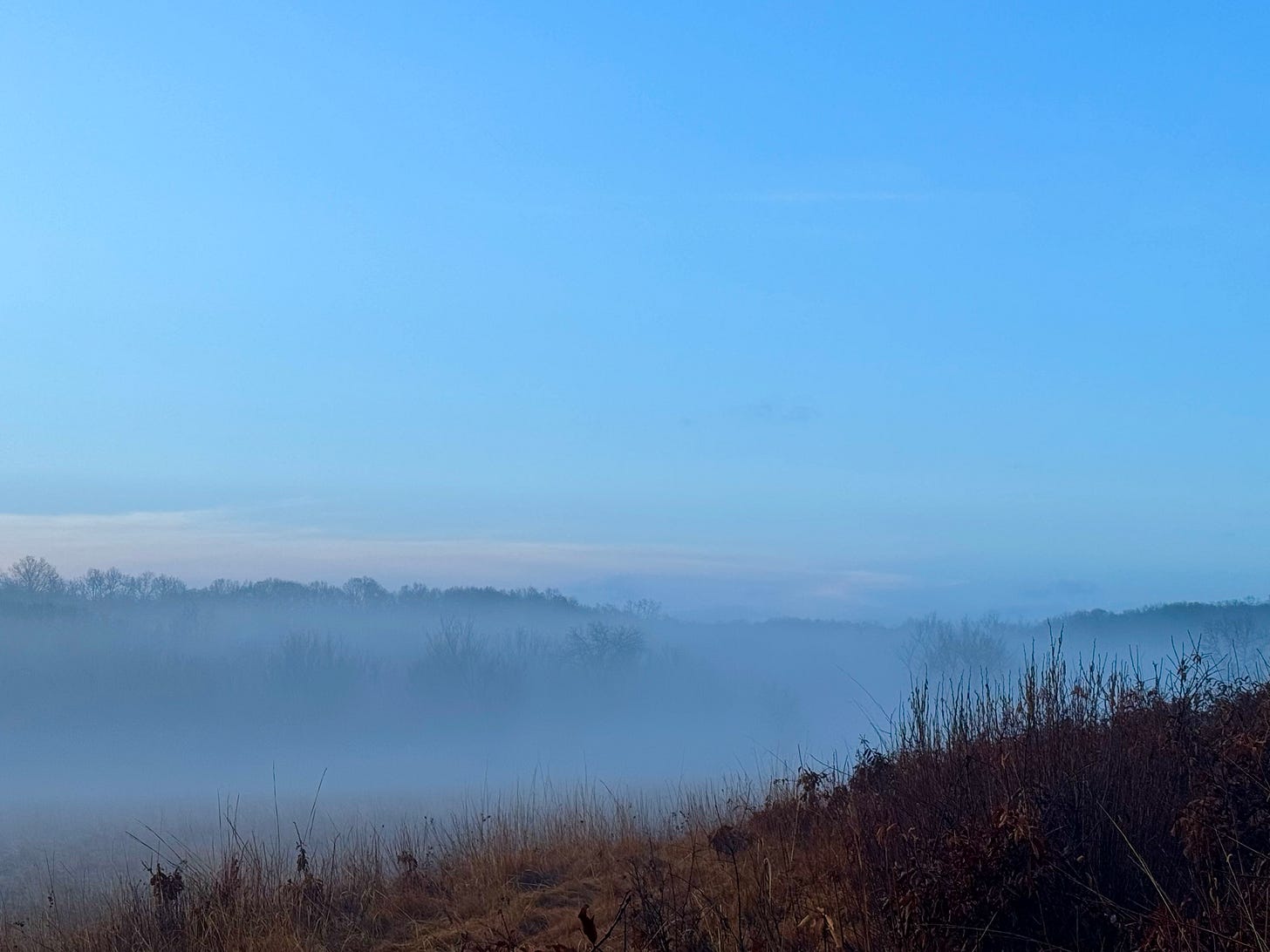

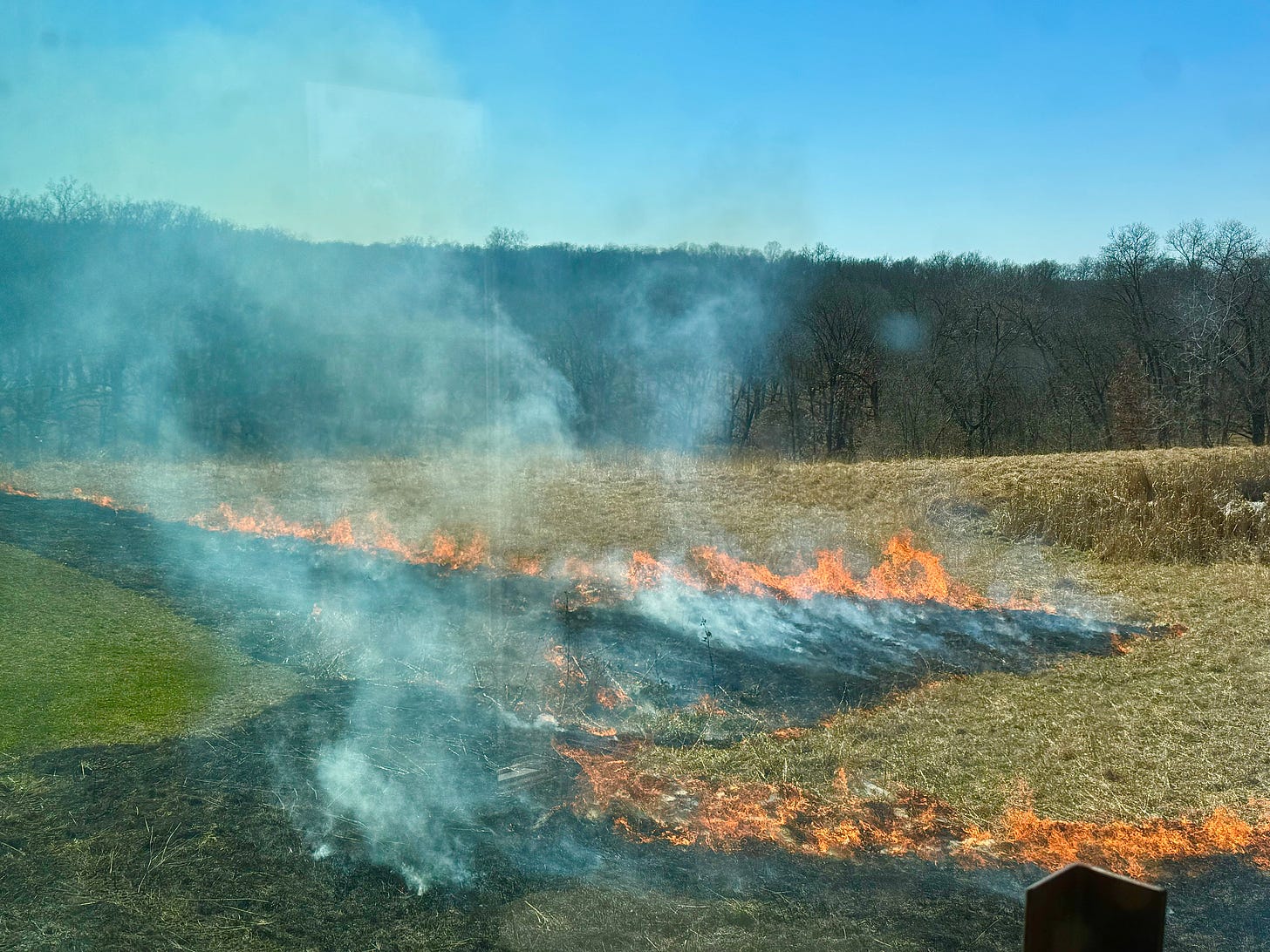

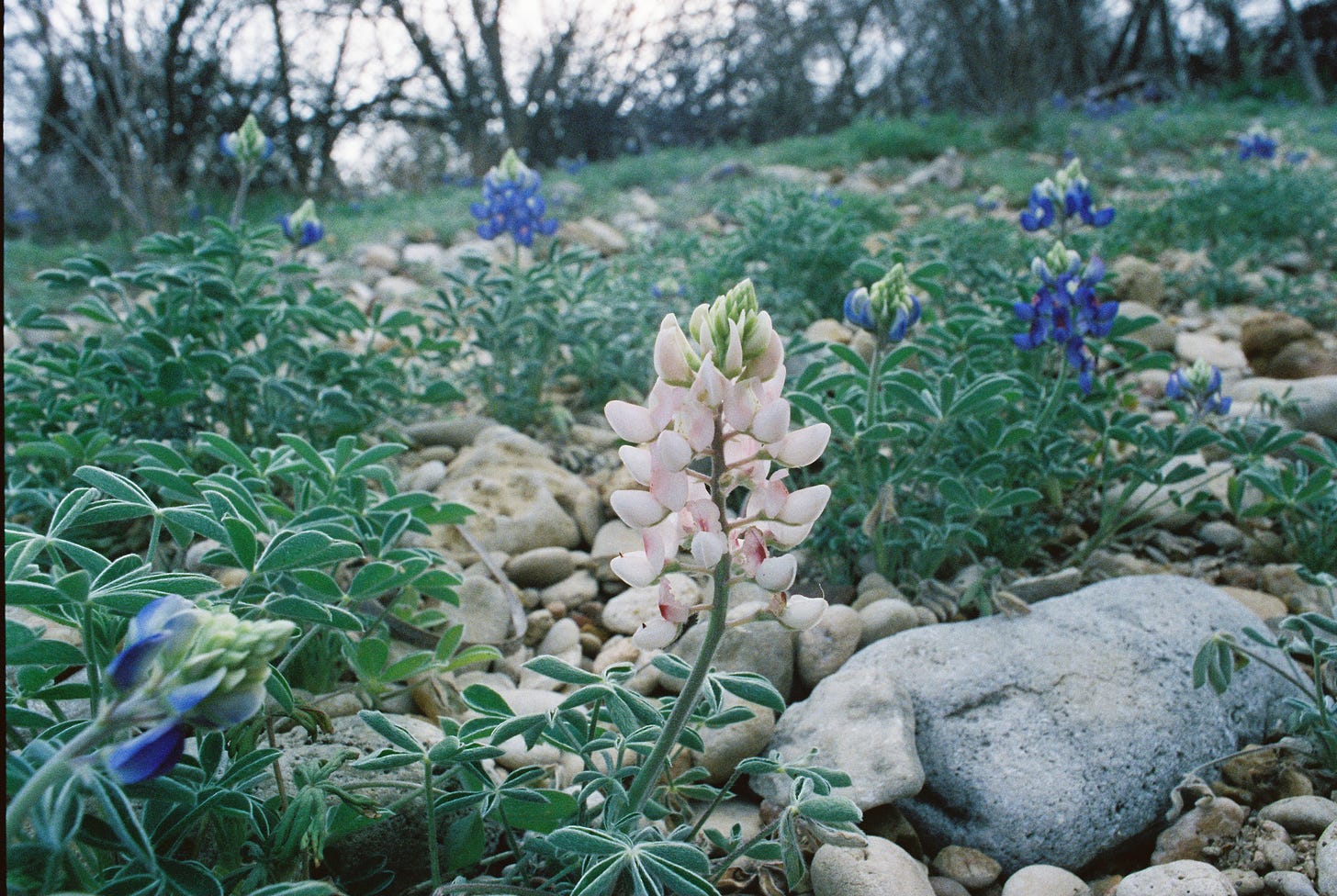
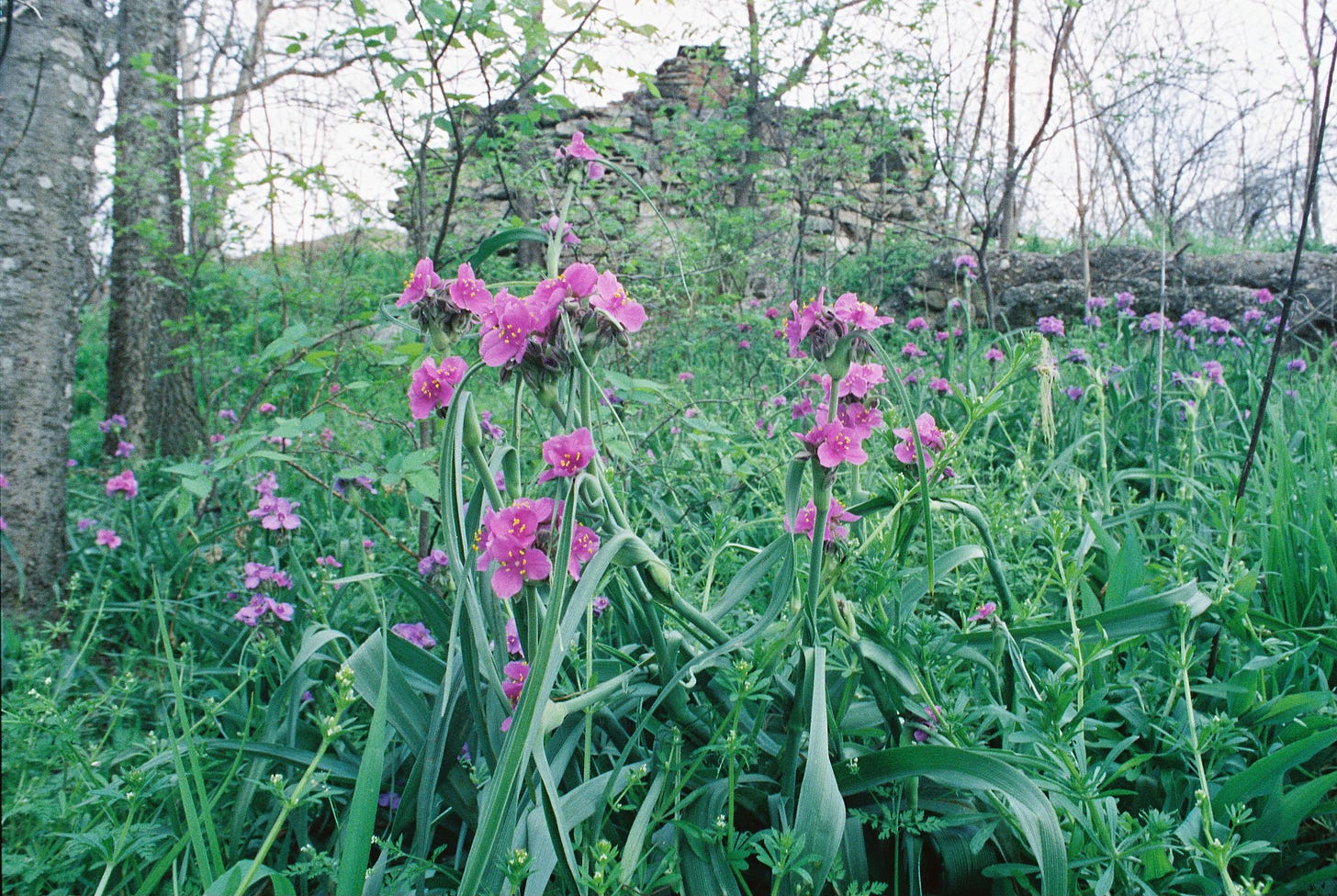

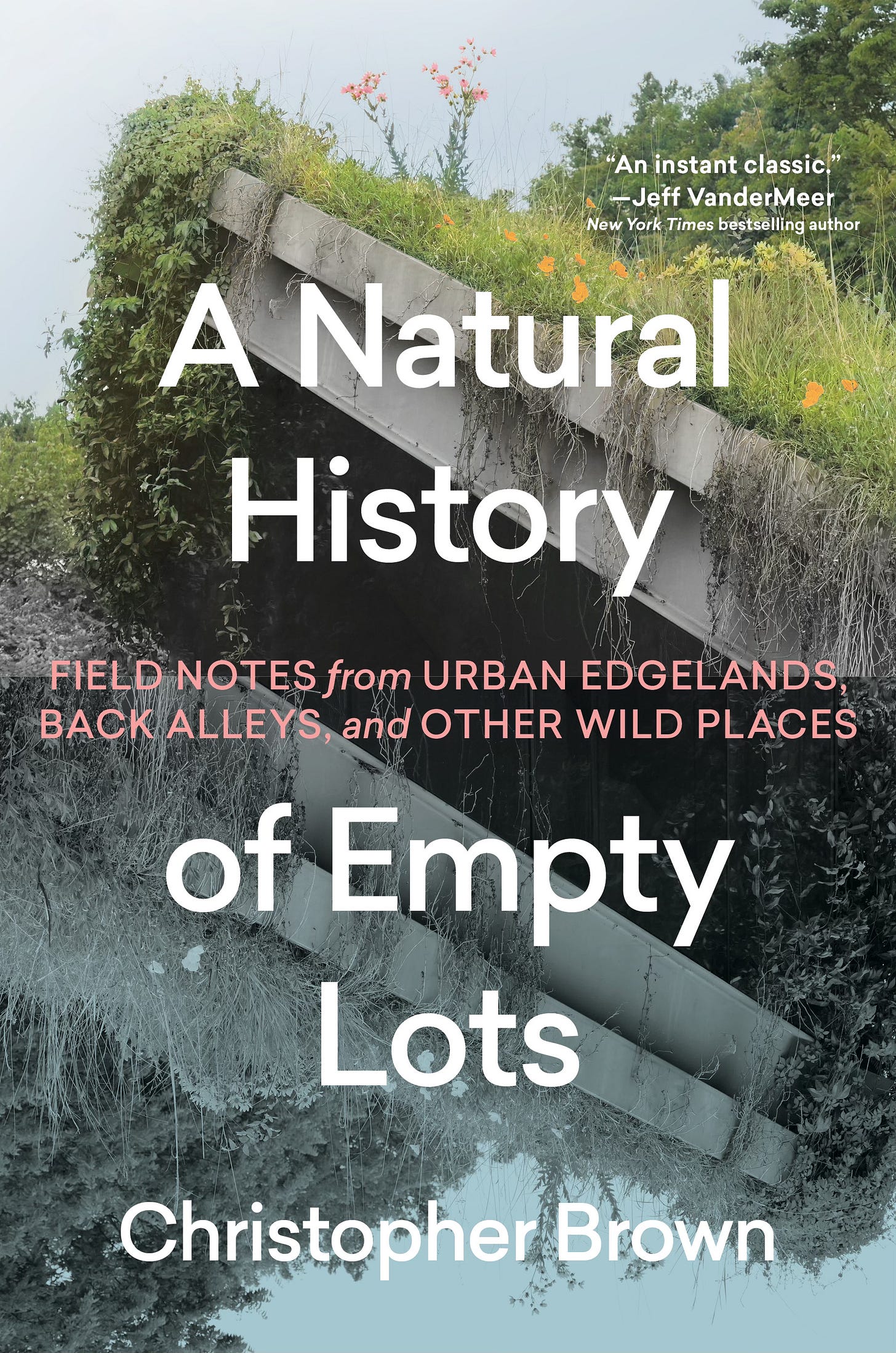
I live in Iowa and have visited Timberhill several times. For your mom to sell and leave is the end of an era. It is a wonderful place. Sybilla is a legend in Iowa conservation. I hope it goes to a person or entity that will take care of it and share it as it deserves.
Well, written. Kudos to your parents' decades-long efforts to restore southern Iowa's native habitat. We moved from our small (50-acre) northeast Iowa farm one year ago after 37 years of similar efforts, although gazing replaced fire most springs. We burned the grassland sections only four times, and only twice did the fires successfully invade the woodlands. Still, that made a significant difference in the native flora.
Virtually all of Iowa has become the Mordor model of industrial agriculture, one of the reasons we moved north. Other reasons being our advanced age and the political devastation that has made Iowa the Texas (or maybe the Mississippi) of the Midwest.
Much as I detest the hunting preserve tracts purchased by wealthy urban "sportsmen" who have no true connection to the land, those tracts may be the seeding points for regeneration of the state's native habitat when non-sustainable industrial agriculture collapses. That will be long after I am dead, of course, but I have hope that Gaia will eventually, in her slow and methodical way, rid herself of this dermatitis with which we have infected her.
Although I am technologically a Neanderthal, I will attempt to pre-order your Empty Lots book.